Jacques Demy’s take on the big American musical, 1967’s The Young Girls of Rochefort, is pure joy. From the first frame to the last, it’s packed with smiles and passion and a giddy sense of its own fun.
Set in a seaside town on a carnival weekend, The Young Girls of Rochefort puts aside the operatic stylings of The Umbrellas of Cherbourg [review] in favor of something more akin to Stanley Donen, director of Singin' in the Rain
 and Funny Face [review]. In case there was any doubt, Demy even imports Gene Kelly, Donen’s former partner and one of the most accomplished hoofers in Hollywood, to participate in this ambitious lark. Real-life sisters Catherine Deneuve and Françoise Dorléac play Delphine and Solange, twins with big dreams. Delphine is a dancer, Solange a composer, and the two get by teaching the children of Rochefort their craft. The pair are planning to move to Paris, however, as soon as the celebrations are over. Solange already has a line on a possible job. The man who runs the local music store, Simon Dame (Michel Piccoli, Belle de jour [review]), has promised to arrange for an introduction to Andy Miller (Kelly), a famous American pianist whom Monsieur Dame went to school with.
and Funny Face [review]. In case there was any doubt, Demy even imports Gene Kelly, Donen’s former partner and one of the most accomplished hoofers in Hollywood, to participate in this ambitious lark. Real-life sisters Catherine Deneuve and Françoise Dorléac play Delphine and Solange, twins with big dreams. Delphine is a dancer, Solange a composer, and the two get by teaching the children of Rochefort their craft. The pair are planning to move to Paris, however, as soon as the celebrations are over. Solange already has a line on a possible job. The man who runs the local music store, Simon Dame (Michel Piccoli, Belle de jour [review]), has promised to arrange for an introduction to Andy Miller (Kelly), a famous American pianist whom Monsieur Dame went to school with.Little does Dame know that Miller is in town, and the foreigner has already run into Solange without realizing it. Andy and Solange are instantly struck by Cupid’s arrow, only to be separated, unsure if they’ll ever meet again. Just about everyone in The Young Girls of Rochefort has a romantic double out there waiting for him or her to find. Dame imagines that Solange is his, but only because he doesn’t realize that the lover who jilted him a decade before, and whom he still pines for today, is her mother. Dame thinks Yvonne (Danielle Darrieux, Mayerling [review], The Earrings of Madame De.... [review]) is in Mexico and has no idea she is running a café nearby.
As for Delphine, she must extract herself from the affections of a skeezy gallery owner (Jacques Riberolles). By coincidence, he has a painting hanging in his salon that looks exactly like Delphine. It’s by a soldier (Jacques Perrin, Z [review]) whom she has never met, it’s his image of his romantic ideal. He goes to Yvonne’s for french fries, but he’s never met her daughters; the gallery owner refuses to introduce Delphine to the painter, precisely because he knows how it will end up. (The painter himself is a kind of symbol: a romantic dreamer whose visions are mostly in abstract, solidifying for this one portrait to capture something real. Demy works in much the same way, using dreamy and knowingly false backdrops to create something profoundly emotional.)
Meanwhile, a pair of carnies (George Charkiris and Grover Dale) appeal to the sisters to perform the sideshow for their traveling motorcycle dealership (yeah, I don’t know either) because their exotic dancers have skipped off with some sailors. And then there is also a little bit of business about...a sadistic killer who hacked up an old chorus dancer named Lola?!
If it sounds like a lot of plot, that’s because it is. But Demy choreographs all of these relationships with the same precision as he does the big dance numbers. In terms of story, The Young Girls of Rochefort is about how love is fated, and so it relies on coincidence and chance opportunities. Turn one corner, meet the man of your dreams; turn the other, miss him forever. For much of the movie, many of the characters go without ever meeting one another, and they are both deaf and blind to the stray mentions or cursory sights that would actually bring them to the one they seek. One character sees the painting of Delphine’s doppelganger but then can’t remember where he saw her face when he meets her for real; Dame hears Andy playing Solange’s music, but he can’t quite place the melody. Only the bad guy who would have Delphine for his own makes the right connection. It seems blind optimism causes literal blindness.
Not that we’re ever all that worried that true love won’t find anyone in the end. Even so, it’s pretty amazing watching Demy arrange the players for the final scenes, contriving for paths to cross and throwing in a few more near misses just to keep us guessing a little. The carnies and their jive have given us a little bit of that old “we’re going to put on a show!” hucksterism, and now that the sisters have had a taste of success, it’s time for their dreams to come true. Demy even outfits Deneuve and Dorléac in spangly red dresses reminiscent of Jane Russell and Marilyn Monroe’s showgirl outfits in Gentlemen Prefer Blondes
 . Michel Legrand also pulls out his biggest show stopper for the scene. The other numbers are catchy but more notable for the composer’s swirling rhythms and melodic filigrees; in this one, he goes big.
. Michel Legrand also pulls out his biggest show stopper for the scene. The other numbers are catchy but more notable for the composer’s swirling rhythms and melodic filigrees; in this one, he goes big.Amusingly, it’s one of the less complicated performances in terms of dancing. Deneuve and Dorléac are confined to a small space, and though they work it with panache, their moves are geared more to the stage than the screen. Demy’s most complicated dance material is reserved for the street scenes, where tourists and shoppers move in unison around the different characters, serving as the chorus to their romantic travails. It’s all quite impressive. Demy isn’t messing around. And neither is Gene Kelly. His level of talent and expertise is evident every time he joins in the fun. His every tiny gesture is graceful, and Andy’s ubiquitous grin seems less a character choice and more the performer being tickled by being part of this grand foreign production. (It must have seemed simultaneously ambitious and naïve to the cinema veteran.) The best dance sequence in the entire film is another twofer, when Andy and Solange are reunited. The dancers are transfixed on one another, making love with each step; Françoise Dorléac is quite literally swept off her feet.
The Young Girls of Rochefort has some of the same candy-coated pastels as The Umbrellas of Cherbourg, particularly in the colorful dresses worn by Deneuve and Dorléac, and in the matching outfits you can spot on the various couples sashaying up and down the sidewalks. Demy has kept his art department intact for both films. Jacqueline Moreau is in charge of costumes, and Bernard Evein is the production designer. They are as essential to the Jacques Demy magic as the man himself. Likewise, Jean Rabier returns for his third time as Demy’s cinematographer. Though, Rochefort is a long way away from the Bay of Angels [review].
The sum total of all of these people working together is a substantially breezy entertainment that, despite basically coming at the end of the era of classic movie musicals, recalls the best of them. This is really Demy at his peak, the bliss of The Young Girls of Rochefort making a nice complement to the melancholy of The Umbrellas of Cherbourg. It’s these two movies that have cemented his legacy, and the ones that most often get revisited. All it takes is that initial spin of Rochefort to understand why: it’s impossible not to feel better after having watched it.
By the way, I reviewed The Young Girls of Rochefort once before in my write-up of a Catherine Deneuve festival for the Portland Mercury. You can read that here. While you're at it, I looked at five of the actress' lesser films that were released as a DVD set back in 2008.




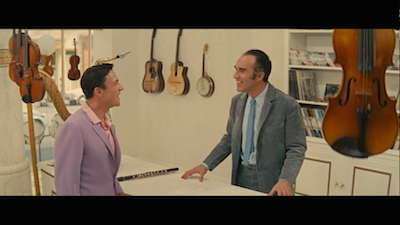





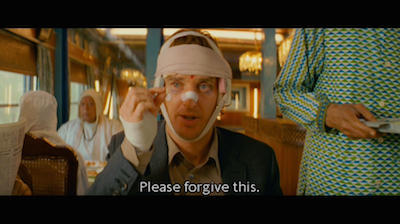
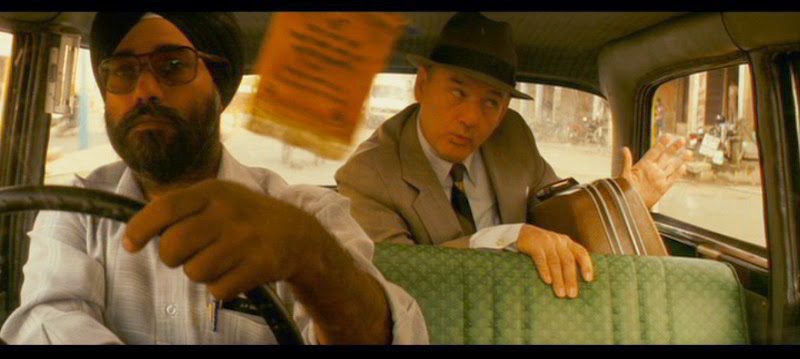
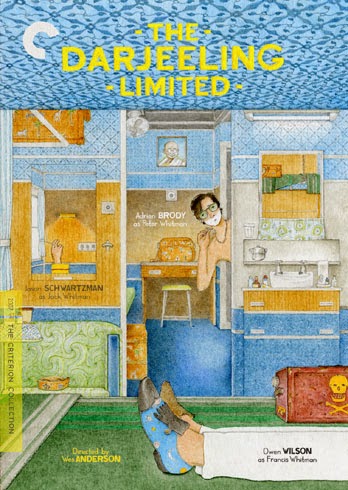
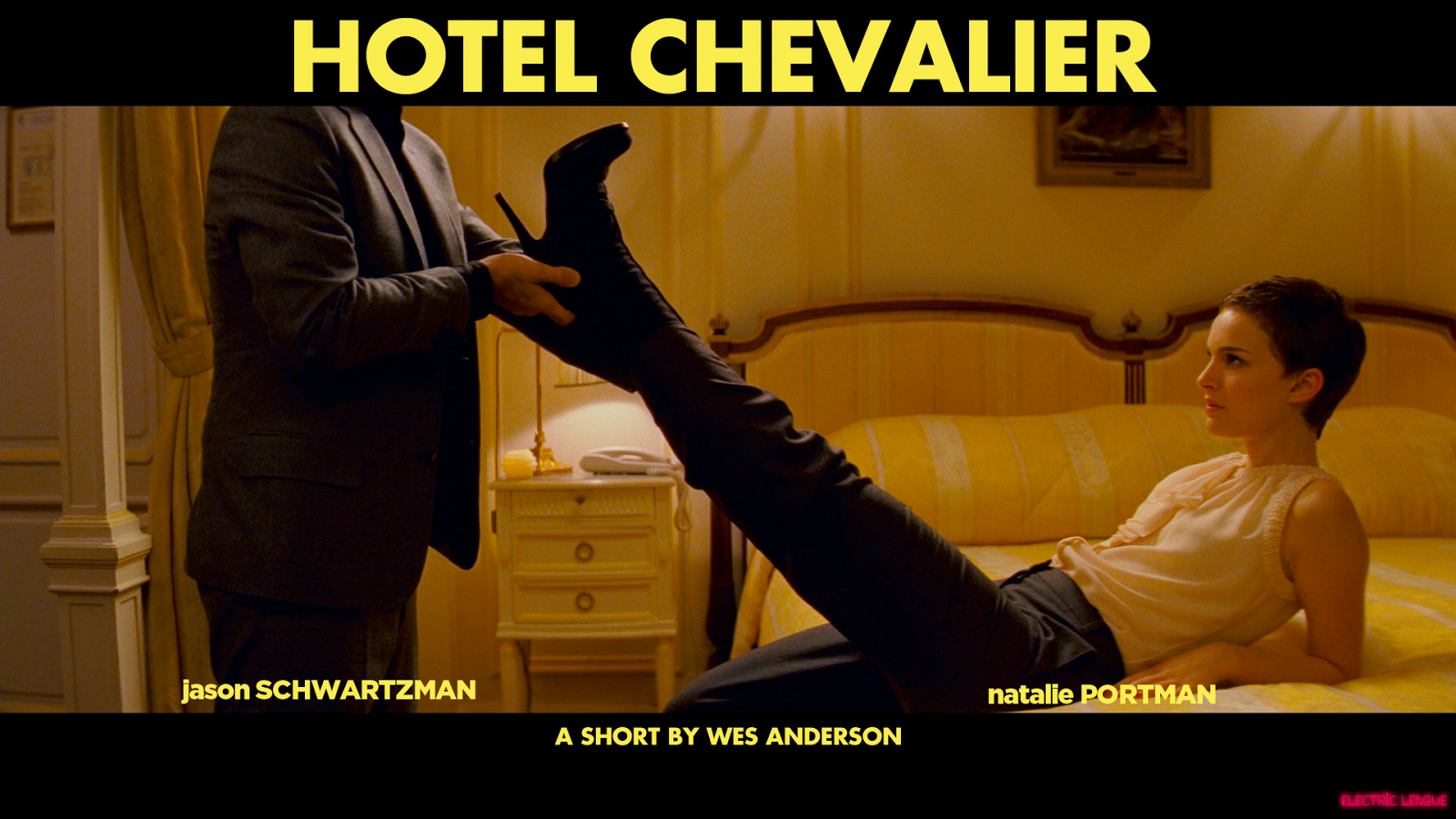

 on the TV. In that film, William Holden’s character is like the Max Fischer of the POW camps: he has the whole place wired. He built a racetrack and runs mice on them. He has a telescope for looking at the women in the neighbor camp. He is both separate and apart.
on the TV. In that film, William Holden’s character is like the Max Fischer of the POW camps: he has the whole place wired. He built a racetrack and runs mice on them. He has a telescope for looking at the women in the neighbor camp. He is both separate and apart. , one of my favorites, the combined The Pursuit of Love and Love in a Cold Climate. Mitford is a bit like F. Scott Fitzgerald as a woman, known for beautiful prose and writing thinly veiled fictions about her and her sisters; Jack does the same about him and his brothers. No matter how much he claims it’s all made up.
, one of my favorites, the combined The Pursuit of Love and Love in a Cold Climate. Mitford is a bit like F. Scott Fitzgerald as a woman, known for beautiful prose and writing thinly veiled fictions about her and her sisters; Jack does the same about him and his brothers. No matter how much he claims it’s all made up.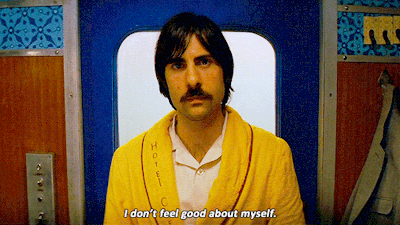
 , the Godfather films [
, the Godfather films [ .
.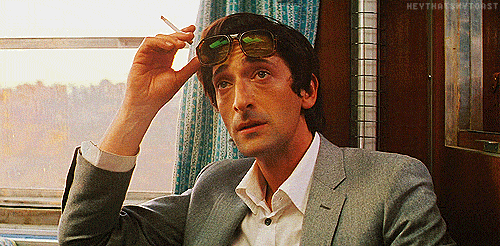
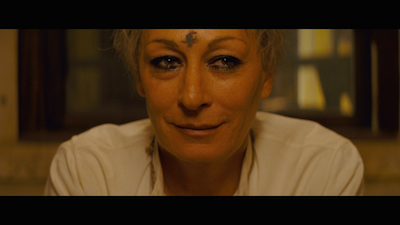
 , the documentary about the making of that film, where we see it was Roman Coppola’s mother, Eleanor, who kept the movie--and his father--on track when Francis Ford’s mad boyish adventure went off the tracks.
, the documentary about the making of that film, where we see it was Roman Coppola’s mother, Eleanor, who kept the movie--and his father--on track when Francis Ford’s mad boyish adventure went off the tracks.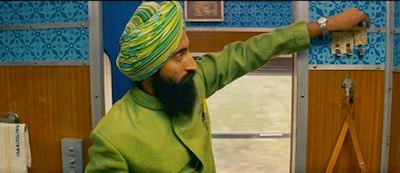

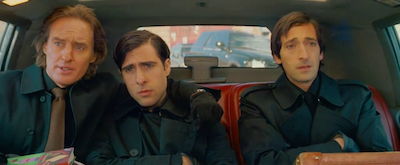
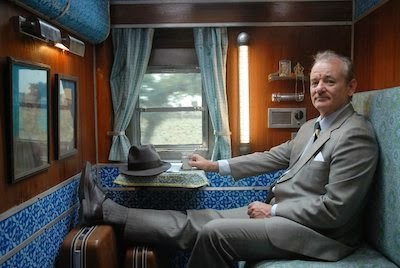








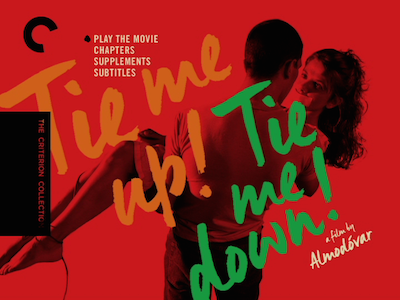
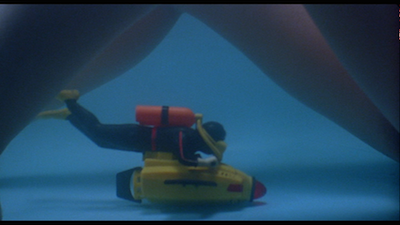


 , with maybe Ricki channeling a little bit of Humphrey Bogart from
, with maybe Ricki channeling a little bit of Humphrey Bogart from  . The fact that Marina escapes her would-be lover (and also killer) in the fake film by strangling him with a phone cord is a bit of misdirection. It’s Marina who will be tied up with a cord, and eventually she won’t be looking for revenge. Ricki’s plan works. Stockholm syndrome sets in, and Marina ends up loving her captor.
. The fact that Marina escapes her would-be lover (and also killer) in the fake film by strangling him with a phone cord is a bit of misdirection. It’s Marina who will be tied up with a cord, and eventually she won’t be looking for revenge. Ricki’s plan works. Stockholm syndrome sets in, and Marina ends up loving her captor.


 , which would have been shot around the same time. He’s handsome and charming but also just downright weird. In a way, his brokenness fills in the fissures of Marina’s own fractured personality. She exudes sexuality right from her first scene, when she decides to forgo wearing underwear because the lines will show; as a performer, Abril is absolutely comfortable in her own skin, and so she manages to show Marina as someone completely attuned to her own pleasure. As her anger dissipates--aided a little by her lapse back into drugs, it should probably be noted--we can see how she would come to crave the intensity of Ricki’s affection. Almodovar keeps her wrestling with her feelings right up until the end. She can’t make up her mind whether to go along with Ricki or to break out.
, which would have been shot around the same time. He’s handsome and charming but also just downright weird. In a way, his brokenness fills in the fissures of Marina’s own fractured personality. She exudes sexuality right from her first scene, when she decides to forgo wearing underwear because the lines will show; as a performer, Abril is absolutely comfortable in her own skin, and so she manages to show Marina as someone completely attuned to her own pleasure. As her anger dissipates--aided a little by her lapse back into drugs, it should probably be noted--we can see how she would come to crave the intensity of Ricki’s affection. Almodovar keeps her wrestling with her feelings right up until the end. She can’t make up her mind whether to go along with Ricki or to break out.





 ) is in a loveless marriage to an impotent man (Michel Piccoli) whom we will also find out has a violent temper. Granted, Edith taunts him, leaving the house wearing a fur coat and nothing else and selling herself on the streets. Edith is stubborn and flighty. She consults a fortune teller before making any decisions, and it’s through the tarot that Edith is informed that she’s destined to fall in love with a metalworker.
) is in a loveless marriage to an impotent man (Michel Piccoli) whom we will also find out has a violent temper. Granted, Edith taunts him, leaving the house wearing a fur coat and nothing else and selling herself on the streets. Edith is stubborn and flighty. She consults a fortune teller before making any decisions, and it’s through the tarot that Edith is informed that she’s destined to fall in love with a metalworker.




 , a sequel to Lola [
, a sequel to Lola [ . Perhaps we could get an Eclipse boxed set of the lesser Jacques Demy? Because, honestly, I’m intrigued enough to track some of these down.
. Perhaps we could get an Eclipse boxed set of the lesser Jacques Demy? Because, honestly, I’m intrigued enough to track some of these down.

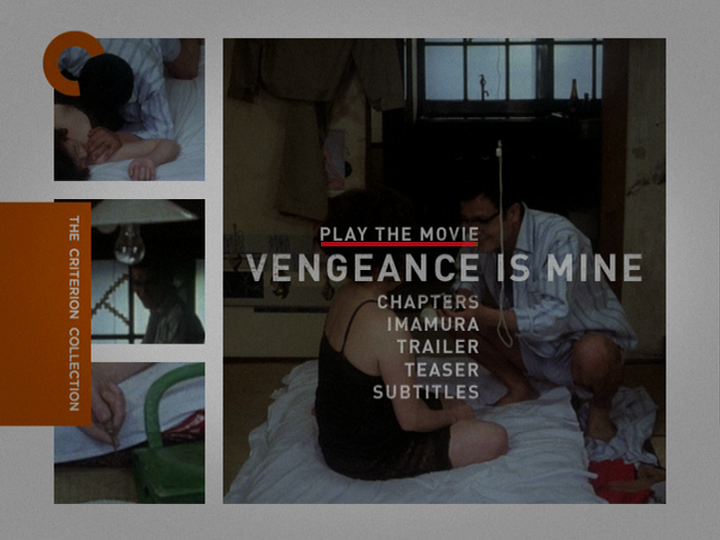

 but with a real mean streak himself. After his first stint in prison, he is more like Max Cady in Cape Fear, [
but with a real mean streak himself. After his first stint in prison, he is more like Max Cady in Cape Fear, [













 and preparing
and preparing 





 and the newly invented blockbuster breathing down everyone's necks, but what Fosse achieved and proved was that the true dreamers didn't have to go into orbit to create their own kind of outer space.
and the newly invented blockbuster breathing down everyone's necks, but what Fosse achieved and proved was that the true dreamers didn't have to go into orbit to create their own kind of outer space.














 . Pierre is almost too brutish, too unaware, the girl must teach him how to behave, her purity standing in relief to his--though her own innocence is balanced by the mature trappings she adopts as self-preservation. The scenes are strikingly familiar. They throw things in the water, she plays dead and let's him carry her, etc. Consider this in direct contrast to the man on the horse that Francoise imagines as a kind of romantic hero, capable of the chivalry she'd push Pierre toward, but that we fear he is not equipped for. Even when he takes the sorcerer's dagger at the carnival, when he walks away with it concealed under his jacket, Bourguignon places a knight's armor in the background, in our eyeline if not Pierre’s. The knight doesn't readily have a sword, but if he did, its size and sharpness would surely put Pierre's illicit dagger to shame.
. Pierre is almost too brutish, too unaware, the girl must teach him how to behave, her purity standing in relief to his--though her own innocence is balanced by the mature trappings she adopts as self-preservation. The scenes are strikingly familiar. They throw things in the water, she plays dead and let's him carry her, etc. Consider this in direct contrast to the man on the horse that Francoise imagines as a kind of romantic hero, capable of the chivalry she'd push Pierre toward, but that we fear he is not equipped for. Even when he takes the sorcerer's dagger at the carnival, when he walks away with it concealed under his jacket, Bourguignon places a knight's armor in the background, in our eyeline if not Pierre’s. The knight doesn't readily have a sword, but if he did, its size and sharpness would surely put Pierre's illicit dagger to shame.
 territory. His difficulties seem genuine, and not an impression.
territory. His difficulties seem genuine, and not an impression.






 , doors open for him. His only real trouble seems to be the tumultuous relationship with his fiancée Emma (Yvonne Furneaux, Repulsion [
, doors open for him. His only real trouble seems to be the tumultuous relationship with his fiancée Emma (Yvonne Furneaux, Repulsion [









 ) vehemently disapproves, she runs away, starting an interstate search stretching from Miami to New York. On her bus ride, she meets Peter Warne (Gable), a tough-as-nails, take-no-crap reporter who begins the picture quitting his job during a drunken phone call. Realizing who Ellie is and seeing she has no idea how to function in the real world away from daddy's money, he attaches himself to her and promises to get her to her husband if he can write the exclusive story. Their many high-speed arguments are delightful, and the pair handle the razor sharp dialogue with aplomb. They also get the emotion right, and filmmakers and actors are still trying to replicate the way Peter and Ellie go from hating everything about each other to being absolutely in love.
) vehemently disapproves, she runs away, starting an interstate search stretching from Miami to New York. On her bus ride, she meets Peter Warne (Gable), a tough-as-nails, take-no-crap reporter who begins the picture quitting his job during a drunken phone call. Realizing who Ellie is and seeing she has no idea how to function in the real world away from daddy's money, he attaches himself to her and promises to get her to her husband if he can write the exclusive story. Their many high-speed arguments are delightful, and the pair handle the razor sharp dialogue with aplomb. They also get the emotion right, and filmmakers and actors are still trying to replicate the way Peter and Ellie go from hating everything about each other to being absolutely in love.






 , a novel about adultery and the disappointment of marriage, alongside the Bible when she disappears; it’s one of God’s few appearances in the movie, faith is as absent as true love.) The wealthy older woman Patrizia (Esmeralda Ruspoli) tells her would-be paramour Raimondo (Lelio Luttazzi) that she was not made for love, and she rebuffs and belittles his advances. He, in turn, proves he can’t handle delicate things, dropping the antique crockery found on the island, a symbol of a lost civilization that the bored socialites argue over. Who owns it? How would you use it? Even knowing where it comes from makes you the object of ridicule. Why be smart or concerned about things long since dead?
, a novel about adultery and the disappointment of marriage, alongside the Bible when she disappears; it’s one of God’s few appearances in the movie, faith is as absent as true love.) The wealthy older woman Patrizia (Esmeralda Ruspoli) tells her would-be paramour Raimondo (Lelio Luttazzi) that she was not made for love, and she rebuffs and belittles his advances. He, in turn, proves he can’t handle delicate things, dropping the antique crockery found on the island, a symbol of a lost civilization that the bored socialites argue over. Who owns it? How would you use it? Even knowing where it comes from makes you the object of ridicule. Why be smart or concerned about things long since dead?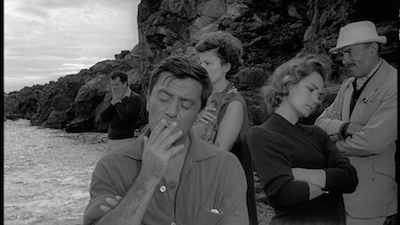
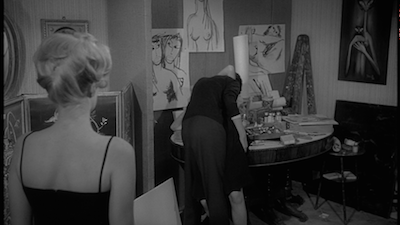
 to promote my comic book You Have Killed Me. It’s funny how much more obtuse the movie becomes with distance. (Perhaps I am remembering
to promote my comic book You Have Killed Me. It’s funny how much more obtuse the movie becomes with distance. (Perhaps I am remembering 
 , though they are sadly stuck without a reliable Robert Mitchum. Gabriele Ferzetti makes for interesting casting. He appears too old for both of them and physically unremarkable. Not exactly handsome, you wouldn’t notice him without a spotlight. Not the way you would Marcello Mastroianni or Alain Delon, the stars of Antonioni’s next two movies, which form a thematic trilogy (and which I will be revisiting next).
, though they are sadly stuck without a reliable Robert Mitchum. Gabriele Ferzetti makes for interesting casting. He appears too old for both of them and physically unremarkable. Not exactly handsome, you wouldn’t notice him without a spotlight. Not the way you would Marcello Mastroianni or Alain Delon, the stars of Antonioni’s next two movies, which form a thematic trilogy (and which I will be revisiting next).


 and Sydney Pollack’s
and Sydney Pollack’s 
 ) and Murray Shisgal (
) and Murray Shisgal (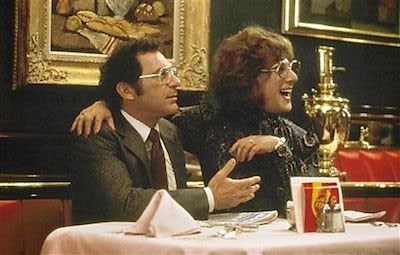
 ) when he learns the truth about the woman he has been wooing. “Does Jeff know...?” I don’t know why it’s not a more famous moment, as it’s akin to the “I’ll have what she’s having” line in
) when he learns the truth about the woman he has been wooing. “Does Jeff know...?” I don’t know why it’s not a more famous moment, as it’s akin to the “I’ll have what she’s having” line in  ; my guess is it’s too specific.
; my guess is it’s too specific.

-large-picture.jpg)



 a couple of decades before David Lynch.
a couple of decades before David Lynch.
 for the art house, but without the murderous intent.
for the art house, but without the murderous intent.





 or Olive Oyl in
or Olive Oyl in  . Yet I find myself enjoying watching her all the same.
. Yet I find myself enjoying watching her all the same.
 , and yet is utterly convincing when she becomes the more confident and mean of the two roommates. One could posit she’s putting the little-girl-lost routine to bed for good. Performance-wise, she is as natural on screen as Duvall is awkward. I would almost try to argue that all of 3 Women is Millie’s dream, given how menacing a figure her counterpart becomes, but the changes occur in Pinky’s vision. She observes, she sees the rifts, and she dives into them.
, and yet is utterly convincing when she becomes the more confident and mean of the two roommates. One could posit she’s putting the little-girl-lost routine to bed for good. Performance-wise, she is as natural on screen as Duvall is awkward. I would almost try to argue that all of 3 Women is Millie’s dream, given how menacing a figure her counterpart becomes, but the changes occur in Pinky’s vision. She observes, she sees the rifts, and she dives into them.





 territory: the self-important city folk would find themselves taken advantage of by the country bumpkins.
territory: the self-important city folk would find themselves taken advantage of by the country bumpkins.











 were clever allusions, throwbacks clearly made using current technology with a progressive and irreverent approach to narrative. Something has always driven the Canadian director to reach back and pull the past into the here and now.
were clever allusions, throwbacks clearly made using current technology with a progressive and irreverent approach to narrative. Something has always driven the Canadian director to reach back and pull the past into the here and now.



 ). Spanning the space of one aimless summer, this avant-garde drama captures the boredom and the heat for one extended family forced together by circumstance as life changes and petty concerns swirl all about.
). Spanning the space of one aimless summer, this avant-garde drama captures the boredom and the heat for one extended family forced together by circumstance as life changes and petty concerns swirl all about.
